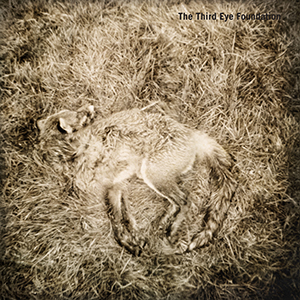The Third Eye Foundation, "Semtex"
 Matt Elliott’s first release under the Third Eye Foundation moniker now sits at a full two decades ago. What is most striking is the fact that, considering how deeply rooted in the era drum 'n' bass/jungle music sounds now, Semtex is largely still as fresh sounding today as it was then. Because of less reliance on the overused "Amen" and "Funky Drummer" loops (though they appear), Elliott produced a work with significantly more depth and nuance, which is why it seems much more timeless than its contemporaries. Reissued here with a bonus disc of demos from the same era, and a lengthy selection of downloadable extra material, it is a nearly four and a half hour revisiting of one of the seminal albums of the mid 1990s.
Matt Elliott’s first release under the Third Eye Foundation moniker now sits at a full two decades ago. What is most striking is the fact that, considering how deeply rooted in the era drum 'n' bass/jungle music sounds now, Semtex is largely still as fresh sounding today as it was then. Because of less reliance on the overused "Amen" and "Funky Drummer" loops (though they appear), Elliott produced a work with significantly more depth and nuance, which is why it seems much more timeless than its contemporaries. Reissued here with a bonus disc of demos from the same era, and a lengthy selection of downloadable extra material, it is a nearly four and a half hour revisiting of one of the seminal albums of the mid 1990s.
Semtex was one of the first attempts to transfer the distinct sound of a genre heavily associated with dance clubs and the last antecedents of rave culture into a distinctly different, colder and more diverse one.While many associated with the ambient dub/illbient access made similar attempts (a notable amount of Justin Broadrick and Mick Harris related side projects come to mind), Semtex was one of the first fully realized attempts.
Part of what helped Elliott cultivate the Third Eye Foundation guise was his barebones approach to recording.In an era where synths were becoming extremely complex and computer recording and processing were becoming a reality, Semtex was recorded on a venerable old four track cassette recorder, using mostly a guitar, effects, and rudimentary sampling.By avoiding technological clichés and focusing on the overall composition, rather than the gimmicks, the album is all the more richer 20 years later.
Right from the opening of "Sleep" the style is set:bent guitar melodies and distortion paired with extremely hard-hitting percussion that blends together wonderfully, rather than being all about the beats.That is not to say that the high BPM chaotic rhythms of the drum ‘n bass scene are insignificant, however:"Still-Life" is wonderfully underscored by a chaotic cut up rhythm section, but that it is not the sole focus.An up front passage of guitar, low vocals, and a broken AM radio breakdown in the middle of the song keep it from being anything close to predictable or stagnant."Next of Kin" keeps the sputtering rhythms, but they are buried in a ton of reverb, with ghostly vocals appearing distant in the mix.
The second disc's bonus tracks sound exactly as I expected them to:rough and at times more like experiments than actual songs, but still of a strong enough quality to not be simply there for historical value."Alarm Song," for example, showcases Elliott's early flirtation with crunchy drum loops, but with an erratic and unpredictable tempo and an overall more open mix."Sleeping" features stiffer drum machine like beats with watery crackles and droning organ sounds, so similar to what was finally released but not fully formed.The same can be said about the nest of swirling melodies and processed voices on "Shard" that are consistent with the main album’s sound, just missing the rhythmic structure and thus not sounding quite complete.
The additional download-only material is even rawer, both in its composition and presentation.Culled from cassette demos dating back to 1991, many of the pieces (some nearing a half-hour in length) seem to draw from both the growing isolationist variation of ambience, but also the harsher noise world, such as the feedback loops and echoing churn of "A Cry for Help" that at times seems like a nod to the Broken Flag axis of artists.For what they are, they are extremely well done, but it also makes sense to place them as downloadable ancillary material, rather than using the limited physical space.
So much of the beat driven music of this era has not aged well:I know to this day any time I hear one of the overused rapid fire drum loops my brain immediately thinks "this sounds so late 1990s", but Semtex is one of the exceptions.While yes, the drum 'n' bass elements do channel a specific era, it is the remainder of Matt Elliott's approach to composition, drawing from a variety of different sounds and styles and culminating in a lo-fi, but perfectly fitting aesthetic that makes this album so strong.Even 20 years after it first appeared, Semtex sounds like the work of no one else, and with the significant amount of additional content included, it makes for a perfect excuse to revisit one of the classic albums of the 1990s.
samples:
 



